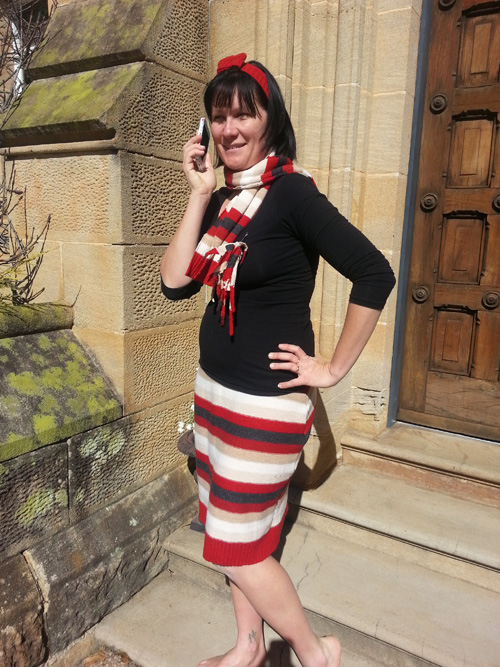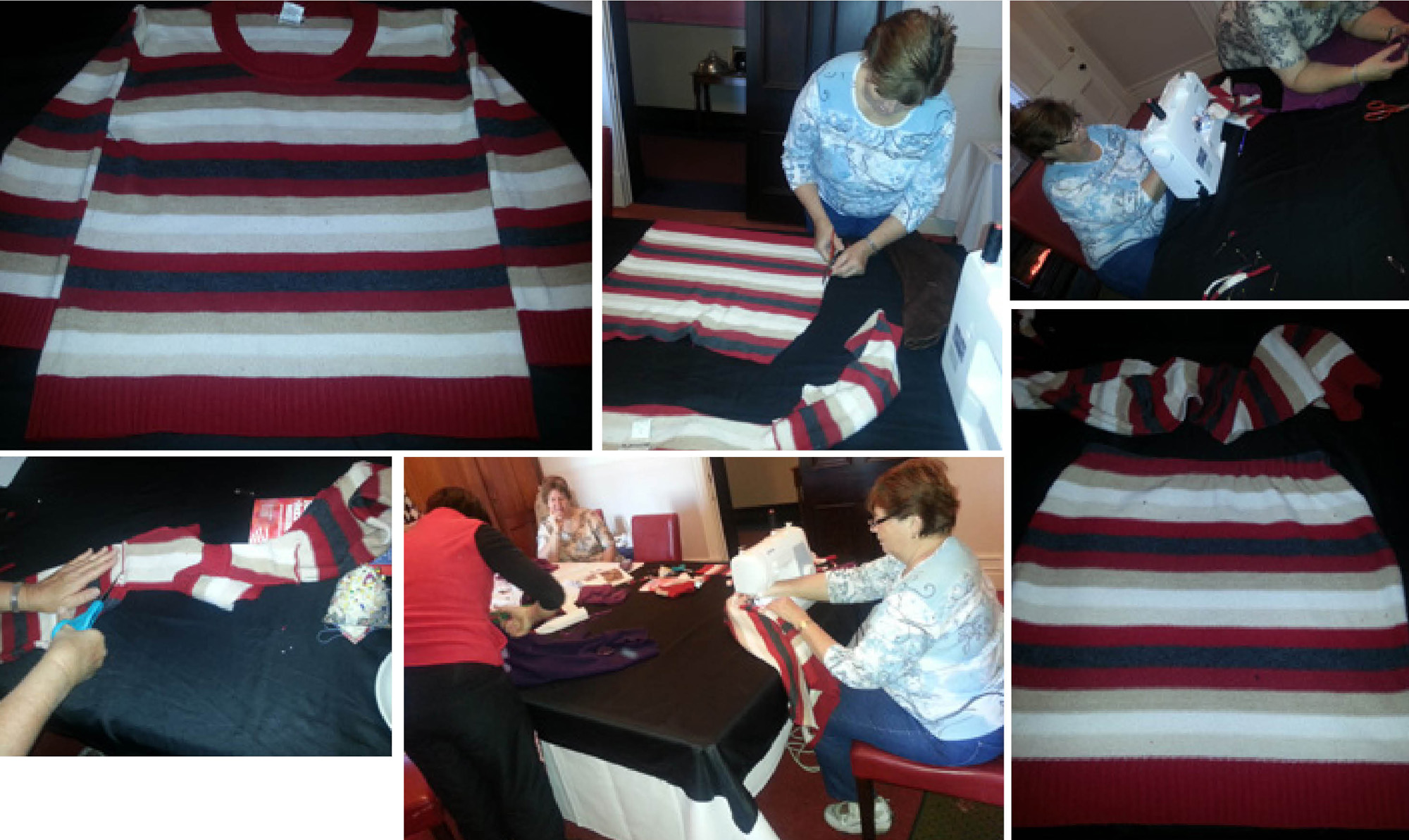 This was an ordinary old cotton jumper that Helen transformed into a skirt, scarf, toggle and headband at the Textile Beat jumper-to-skirt workshop – and Desirea modelled at the gorgeous Abbey of the Roses in Warwick, Queensland.
This was an ordinary old cotton jumper that Helen transformed into a skirt, scarf, toggle and headband at the Textile Beat jumper-to-skirt workshop – and Desirea modelled at the gorgeous Abbey of the Roses in Warwick, Queensland.
Cotton farmers are paid about $500/bale (which is 227kg) for raw cotton or about $2/kg for the cotton in a standard jumper which weighs less than 500 gms. A lot of water, energy and other inputs (insect control, defoliant) go into producing this natural fibre. After being grown on farms, the fibres then go through ginning, spinning, colouring, knitting to turn it into garments which we buy so easily and cheaply in clothing stores because they are made en mass. Billions and billions of such garments are produced every year to clothe the world.
US journalist Elizabeth Cline says Americans consume nearly 20 billion garments a year. When they’re tired of them, they are often donated to charity. But the reality is that only about 20 percent of the clothes Americans donate are sold in charity thrift shops, because there is simply too much to resell. About half of secondhand clothing is turned into fibers or wiping rags, and the rest is shipped overseas as used clothing.
I find these facts astounding and am certain the Australian story is not much different – which is why I’m doing this little counter-culture Sew it Again upcycling project to demonstrate a sustainable way of reusing natural fibre clothing instead of sending them to landfill or other lands (where they may, or may not, be useful). The jumper to skirt conversions process demonstrated below is simple and easy. You can view other upcycled clothing on my pinterest page or the Textile Beat facebook page.
